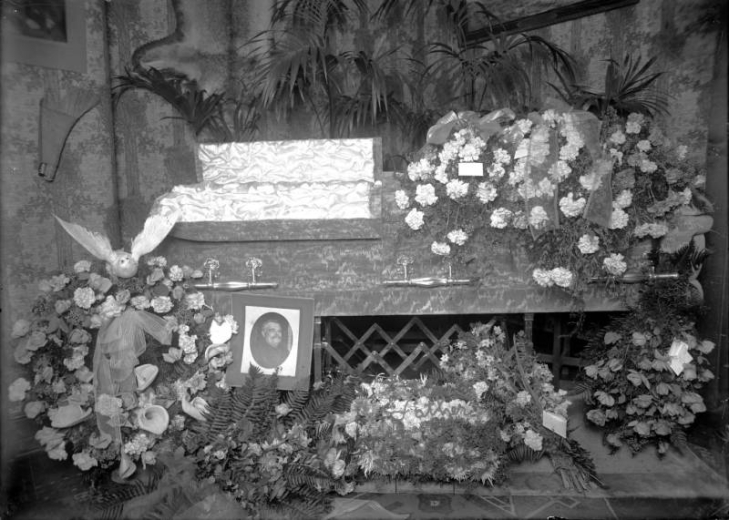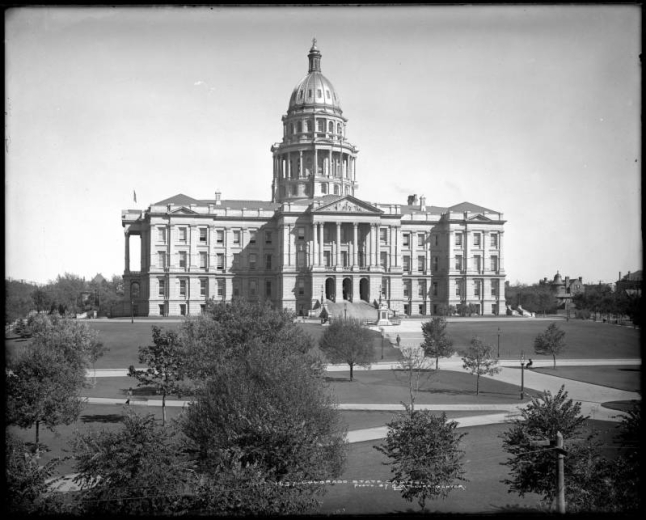This guide provides tips for U.S. researchers interested in obtaining Italian citizenship through ancestral descent.
(Disclaimer: this guide does not constitute legal advice; consult your regional Italian consulate for the most up-to-date information regarding the Italian dual citizenship application).
First things first: Italy is a country that allows for the recognition of Italian citizenship through Italian ancestry. According to to the Consulate General of Italy (Chicago), Italian citizenship is
based upon the principle of "jus sanguinis" (blood right), meaning that the child born from an Italian father or mother is an Italian citizen regardless of the place of birth.
This means that Italy allows for the recognition of Italian citizenship for people of Italian descent born in the United States if they meet two requirements:
- they have a direct ancestor who was an Italian citizen (parent, grandparent, or great-grandparent)
- and that direct ancestor was NOT a naturalized U.S. citizen when their child was born
- [IMPORTANT UPDATE: On October 3, 2024, the Italian Ministry of Interior issued new guidelines that apply to applications filed through an Italian consulate or municipality, for the situation in which an Italian-born ancestor voluntarily became a citizen of another country while their child was still a minor.]
Note: there are several caveats to these requirements that the Consulate General of Italy (Chicago) outlines
Obtaining Italian dual citizenship is a process that can take several years to complete. Below is a rough outline of the steps needing completion before one's Italian consulate appointment.
- Figure out which Italian consulate serves your U.S. state and closely review their guidelines for applying for Italian citizenship through ancestral descent. For example, the Italian consulate in Chicago serves the residents of Colorado, along with Illinois, Iowa, Kansas, Minnesota, Missouri, Nebraska, North Dakota, South Dakota, Wisconsin, and Wyoming.
- Delve into online genealogical research to get a rough idea if your Italian direct ancestor (parent, grandparent, or great-grandparent) may have naturalized. If your Italian ancestor naturalized, be mindful of when their certificate of naturalization was issued. If it occurred AFTER their child (your grandfather, for example) was born, you may still qualify to apply for Italian citizenship.
- [IMPORTANT UPDATE: On October 3, 2024, the Italian Ministry of Interior issued new guidelines that apply to applications filed through an Italian consulate or municipality, for the situation in which an Italian-born ancestor voluntarily became a citizen of another country while their child was still a minor.]
- [IMPORTANT UPDATE: On October 3, 2024, the Italian Ministry of Interior issued new guidelines that apply to applications filed through an Italian consulate or municipality, for the situation in which an Italian-born ancestor voluntarily became a citizen of another country while their child was still a minor.]
- Order naturalization records through the U.S. National Archives and Records Administration (NARA). If NARA does not find record of your ancestor naturalizing in a federal court, you will receive a negative search letter — you will need to then check if your ancestor may have naturalized in a municipal, county, or state court (typically these records are available through state archives or state historical societies). If it seems likely that naturalization did not occur, you will need to to obtain a certified letter of non-existence of a naturalization form by filing a Form G-1566 request with the United States Citizenship and Immigration Services.
- Make an appointment with the Italian consulate that serves your state. These appointments should be made online through your consulate office's website and often book out several months or years in advance. Look for the link to Prenotami, the consular network's reservation system (note: you will need to register for a free account).
- Obtain documentation that shows you are a direct descendent of your Italian ancestor. Documentation includes certified long-form birth and death records and marriage license applications related to your Italian direct ancestor all the way down to you. See FamilySearch's Italy Genealogy guide for detailed information on locating your ancestors' Italian records. See FamilySearch's U.S. Vital Records guide for information on locating U.S. vital records. Note that U.S. vital records will need to be translated.
- Ensure that U.S. vital records receive an apostille, a seal certifying that the records are legitimate and authentic and can be accepted by Hague Apostille Convention countries. The Secretary of State of the state where the document was created issues the apostille and the process can be done in-person or by mail.
Naturalization is the process by which a foreign-born person becomes a citizen of the United States.
- Before 1906, any "court of record" (municipal, county, state or federal court) could grant U.S. citizenship
- After the Basic Naturalization Act of 1906 was passed, naturalization forms were standardized and state and local courts were encouraged to pass their naturalization jurisdiction to federal courts
From 1906 to 1952, naturalization was a two-step process which yielded two types of records.
- Declaration of Intention (known as "First Papers")
- Petition for Naturalization (known as "Second Papers" or "Final Papers")
- The petition could occur two years after a Declaration of Intent was filed, assuming that residency requirements had been met (generally five years)
- This is the step that actually granted full citizenship
Before reaching out to the National Archives and Records Administration (NARA) to order a certified naturalization record, use online resources to research if your Italian ancestor became a naturalized U.S. citizen.
A good place to begin is the Citizenship & Naturalization collection in Ancestry Library Edition (available at all DPL locations). Federal census records also can provide clues (though not always accurate!) about an ancestor's naturalization status.
- COLORADO: If your ancestor may have pursued naturalization in Colorado, check out the following tools before contacting NARA:
- Denver and Pueblo Naturalization Records Research Tool (an index to select records on microfilm; certified copies can be ordered through NARA)
- Colorado Naturalization Records, 1867-1964 Research Tool (an index to records available through the Colorado State Archives)
- Colorado, State and Federal Naturalization Records, 1868-1990 on Ancestry Library Edition (available in DPL libraries)
- Colorado naturalization records, 1876-1990 available through FamilySearch (create a free account to view database)
- Determine where your ancestor lived after arriving in the United States (ship manifests, census records, and city directories available through Ancestry Library Edition can be sources for this information).
- Contact the National Archives & Records Administration (NARA) office that holds naturalization records of that state. See NARA's Dual Citizenship Assistance - Frequently Asked Questions for detailed instructions on determining which NARA office to contact and what to include in your request.
- NARA does NOT hold all naturalization forms and you may want to contact other institutions (typically state archives or historical societies) that hold naturalization records generated by municipal, county, and state courts
COLORADO - For Colorado naturalization records generated in county courts:
The Colorado State Archives holds the originals of most early naturalization records generated in Colorado county courts.
These records have an online index: Colorado Naturalization Records, 1867-1964
If the NARA office you contacted does not find a record of your ancestor in their holdings, they do NOT have the authority to issue a certification of non-existence of a record; they can only issue a negative search letter.
- To obtain a certified letter of non-existence of a naturalization form, you will want to file a Form G-1566 request with United States Citizenship and Immigration Services
Vital records include birth, marriage, divorce, and death records. The CDC's Where to Write for Vital Records provides a helpful breakdown of where to go for vital records in each state.
Providing certified and long-form copies of U.S. vital records is an important component to an Italian dual citizenship application as it provides documentation that you are related to your direct ancestors.
- Long-form vital records generally provide more information (parents' names, birthplace, birth date, etc.), which helps to verify that the person mentioned in the record is the correct individual
The U.S. does not have a federal registry for maintaining birth records — this is done at the state level. However, states began establishing their birth registries at different periods of time. See FamilySearch's How To Find U.S. Birth Records guide, which breaks down the process of obtaining a certified birth record for each state.
- COLORADO:
- 1876 - 1908 birth records are available through the Colorado State Archives
- 1909 - present birth records are available through the Colorado Department of Public Health & Environment
Marriage records are usually held at the county level in the United States. For the purpose of an Italian citizenship application, a long-form marriage certificate should be sought (as it provides more personal information than the marriage certificate). In some cases, a copy of the marriage license application may be coupled with a certified copy of the marriage license to offer sufficient documentation.
See FamilySearch's How To Find U.S. Marriage Records guide for detailed instructions according to state.
DENVER:
∙ Marriage license applications are available through the Denver Office of the Clerk and Recorder
COLORADO: See our Marriage and Divorce Records of Colorado guide for more information.
Divorce records in the U.S. vary by state and may have been generated under the jurisdiction of a variety of courts. See the CDC's Where to Write for Vital Records to see where divorce records reside in each state.
COLORADO: Certified copies of divorce records are available from the clerk of the district court where the divorce was granted. See our Marriage and Divorce Records of Colorado guide for several divorce indexes.
See FamilySearch's How to Find U.S. Death Records, which breaks down the process of obtaining a certified death record for each state. See our Obituaries, Cemeteries & the Dead research guide for help pinpointing a date and place of death.
COLORADO:
1876 - 1899: certified death certificates are held by county clerk where the death occurred (see the directory of county clerks maintained by the Colorado County Clerks Association)
1900 - present: certified death certificates can by ordered through the Colorado Department of Public Health & Environment
Notarized church records (baptismal, marriage, and death records) can stand in when governmental records do not exist. See FamilySearch's U.S. Church Records guide for further information.
COLORADO: See FamilySearch's Colorado Church Records guide.
Note that all U.S. birth, marriage, and death records in your application will need to receive an apostille, a seal certifying that the records are legitimate and authentic and can be accepted by Hague Apostille Convention countries. The Secretary of State of the state where the document was created issues the apostille and the process can typically be done in-person or by mail for a fee.
- COLORADO: For all vital records issued in the state of Colorado, follow instructions given by the Colorado Secretary of State's Apostilles and Authentications page
You will need to procure at least one birth certificate from Italy for your application. The birth record will need to be an estratto di nascita in formato internazionale (birth extract in international format). The process of finding and obtaining certified Italian vital records is covered in FamilySearch's Italy Genealogy guide. Additionally, several private firms exist that specialize in obtaining certified vital records in Italy for a fee.
If your Italian ancestor has a name or date discrepancy between their U.S. vital records and their Italian birth record, you may need to contact the comune (Italian municipality) that issued the birth record to obtain the following:
- Certificate of Esatte Generalità: states that the individual named on the records presented (which show conflicting information) is one and the same
- Certificate Positive/Negative: certifies that your ancestor was the only individual born with that specific name and on that specific day








